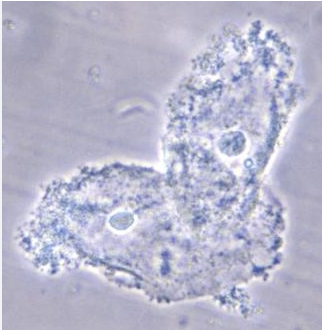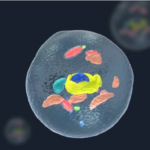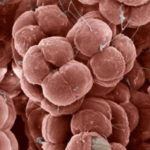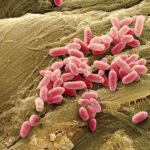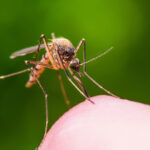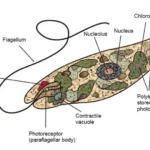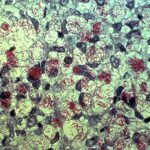Gardnerella Vaginalis: Understanding Symptoms, Diagnosis, and Treatment
Gardnerella vaginalis is a type of bacterium that thrives in the oxygen-deprived environment of the vagina, leading to the formation of foul odors and causing malodorous vaginal discharge in women. It is also known as bacterial vaginosis, bacterial vaginosis, hemophilus vaginalis, nonspecific vaginitis, and gardnerella vaginitis.
Symptoms of Gardnerella Vaginalis
If a patient’s vaginal secretions appear dirty white and emit a foul fishy odor, Gardnerella vaginalis may be suspected. Among the signs of infection is a typical vaginal discharge associated with a “musty” or “fishy” odor. This odor intensifies particularly during menstruation and intercourse. Since individuals may become accustomed to this discharge odor, it may go unnoticed, although it is often noticed by those around them.
The amount of discharge varies. Depending on this discharge, vaginal irritation, itching, and burning may occur. Burning pain, also known as dyspareunia, is pronounced during intercourse. It is observed that the foul odor increases after washing the genital area with alkaline soaps.
Gardnerella vaginalis is the most common cause of bacterial vaginitis in sexually active women. In men, it usually remains asymptomatic, showing no signs. Symptoms mainly manifest as burning sensation and mild transparent discharge during urination.

Diagnosis
In women, a direct diagnosis can be made based on the appearance of the discharge during a gynecological examination.
The Whiff test is positive when the addition of potassium to the fluid taken from the vagina results in the detection of a foul odor. A positive Whiff test favors bacterial vaginosis. Microscopic examination reveals white blood cells and characteristic “clue cells.” The vaginal pH is elevated, exceeding 4.5.
PCR testing is currently emerging as a preferred method due to its rapid and reliable application. A urethral swab in men and a vaginal swab in women yield responses with nearly 100% sensitivity within 24 hours.
Treatment
The preferred treatment for Gardnerella vaginalis is oral metronidazole, clindamycin, or ornidazole antibiotic therapy taken orally for 7 days. In some cases, vaginal gel or suppository may be added to oral medication therapy.
To prevent recurrence of infection, it is recommended to treat sexual partners simultaneously.
During early pregnancy and breastfeeding, oral medications of this nature cannot be administered. Instead, vaginal suppositories or creams may be applied. Since such local treatments do not enter the bloodstream, they do not affect the baby or milk.
Vaginal douching only temporarily eliminates foul-smelling secretions and does not treat the infection.
If left untreated in women, bacterial vaginosis can lead to inflammation of the uterus, tubes, and ovaries (PID) and infertility in the long term. If contracted during pregnancy, it can cause premature birth. It is also known to cause a feverish condition called “puerperal fever” in the postpartum period.
Bacteriological properties of Gardnerella vaginalis
Gardnerella vaginalis, a bacterium associated with vaginal flora, possesses various bacteriological characteristics that aid in its identification and understanding. A comprehensive analysis of its bacteriological properties reveals the following:
Gram Staining: Gardnerella vaginalis is categorized as Gram-variable. This means it cannot be consistently stained as Gram-positive or Gram-negative during the Gram staining procedure. Instead, it may appear as rods or coccobacilli (short rods with an intermediate shape between cocci and bacilli).
Enzymatic Activities: Catalase Test: Gardnerella vaginalis is catalase-negative, indicating the absence of the enzyme catalase, which breaks hydrogen peroxide into water and oxygen. Oxidase Test: The bacterium is also oxidase-negative, indicating the absence of the cytochrome c oxidase enzyme in the electron transport chain. Sodium Hippurate Hydrolysis: A distinctive feature of Gardnerella vaginalis is its ability to hydrolyze sodium hippurate, resulting in a positive test outcome. Carbohydrate Metabolism: Gardnerella vaginalis demonstrates acid production from specific carbohydrates. It consistently metabolizes glucose and maltose to produce acid. However, its ability to produce acid from sucrose varies, indicating that not all strains of the bacterium may exhibit this characteristic.
Culture Conditions: Culture Medium: Gardnerella vaginalis is preferably cultured on specialized media for optimum growth and isolation. Vaginal agar (V agar) and Human Blood Tween (HBT) agar are preferred media for cultivation. Growth Conditions: The bacterium requires anaerobic conditions for optimum growth. Cultivation is typically performed for 48 hours to ensure sufficient growth and isolation.
In conclusion, the bacteriological characteristics of Gardnerella vaginalis provide a comprehensive understanding of its biology and behavior. These attributes, combined with specific culture conditions, facilitate its identification in clinical and research settings, thereby aiding in the investigation of its role in human health and disease.
